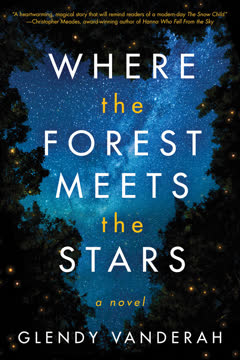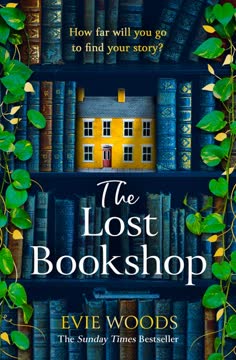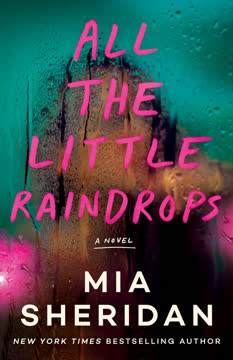Plot Summary
Changeling in the Woods
Joanna Teale, a graduate student and field biologist, returns to her rural Illinois cottage to find a barefoot, pajama-clad girl lurking in the woods. The girl claims to be an alien from the Pinwheel Galaxy, inhabiting a dead girl's body, and insists she must witness five miracles before returning home. Jo, still grieving her mother's death and her own battle with cancer, is wary but drawn to the girl's intelligence and hunger. Their first night together is marked by suspicion, curiosity, and a shared meal by the fire, setting the stage for a summer of unexpected connection and healing.
Miracles and Marshmallows
The girl, soon to be called Ursa, returns the next day, still refusing to reveal her origins. Jo, torn between concern and exasperation, seeks help from her neighbor, Gabriel Nash, the enigmatic "Egg Man." Together, they try to coax the truth from Ursa, but she clings to her alien story and her quest for miracles. As Jo feeds her and offers shelter, she notices bruises on Ursa's body, deepening her worry. The girl's stubbornness and Jo's compassion begin to intertwine, hinting at the transformative journey ahead for both.
Bruises and Broken Trust
Jo, alarmed by Ursa's bruises and evasiveness, calls the sheriff. The local deputy, jaded by his own experiences, is skeptical and dismissive, warning Jo about the dangers of foster care. When the police arrive, Ursa flees into the night, leaving Jo wracked with guilt and uncertainty. The encounter exposes the failures of the system and the complexities of intervening in a child's life, especially when the child refuses to be "saved" on anyone else's terms.
The Alien's Secret Shelter
After a stormy night, Jo discovers Ursa has been sleeping in a dilapidated shed with a stray dog she names Little Bear. The girl's resilience and resourcefulness become clear, but so does her vulnerability. Jo, unable to force Ursa to leave or stay, begins to accept the ambiguity of their relationship. Their days become a delicate dance of trust, with Jo providing food and safety while Ursa maintains her fantastical narrative and independence.
Eggs, Neighbors, and New Names
Gabriel Nash becomes more involved, offering his farm as a daytime refuge for Ursa. The girl's quick wit and voracious curiosity endear her to both Jo and Gabe, even as her past remains a mystery. She chooses the name Ursa Major, inspired by the stars, and immerses herself in the interests of her caretakers—bird ecology with Jo, Shakespeare and farm life with Gabe. The trio forms an unconventional family, united by their own wounds and the need for connection.
Bird Nests and Blue Eyes
Jo introduces Ursa to her fieldwork, teaching her how to find and monitor bird nests. Ursa's awe at the natural world becomes her first "miracle," and her bond with Jo deepens. Gabe's gentle presence and shared vulnerability—his struggles with depression and family secrets—create a safe space for all three. Together, they find solace in the rhythms of nature, the search for meaning, and the small joys of daily life.
The Unwanted Goodbye
As Jo's academic advisor and colleagues visit, the pressure to send Ursa home mounts. The girl's refusal to reveal her origins or return to any family forces Jo and Gabe to confront the limits of their protection. When Jo insists Ursa must leave, the girl's heartbreak is palpable, and Jo is left questioning her own capacity for detachment. The threat of separation looms, testing the fragile bonds they've built.
Shared Custody, Shared Secrets
Jo and Gabe settle into a routine of "shared custody," passing Ursa between their homes to avoid detection. The girl thrives, gaining weight and confidence, but the adults' anxieties persist. Their partnership is tested by disagreements over boundaries, safety, and the ethics of keeping Ursa hidden. The trio's intimacy grows, but so does the sense that their idyllic summer cannot last.
The Infinite Nest
One night, Gabe brings his telescope to Jo's cottage, showing Ursa the Pinwheel Galaxy. The sight becomes a metaphor for their intertwined lives—a nest of stars, fragile yet infinite. The moment cements their connection, and Jo and Gabe's mutual attraction intensifies. Their vulnerabilities—Jo's scars, Gabe's anxiety—are laid bare, and they begin to imagine a future together, even as the past threatens to intrude.
Storms, Scars, and Survival
A violent storm interrupts a day of fieldwork, and Ursa is injured by a falling branch. The crisis forces Jo and Gabe to confront the reality of their situation: they cannot protect Ursa from every danger, nor can they shield themselves from the consequences of their choices. The episode brings them closer, but also heightens their awareness of the risks they're taking—emotionally, legally, and physically.
Urbana and the Purple People Eater
Jo takes Ursa to Urbana to secure a new home with her friend Tabby. The visit offers a taste of stability and belonging, but also underscores the precariousness of Ursa's place in Jo's life. The girl's creativity and charm win over Tabby, but her alien persona persists, a shield against the pain of abandonment. The "Purple People Eater" song becomes a symbol of Ursa's otherness and her yearning for acceptance.
Effingham Shadows
On the return trip from Urbana, Jo senses they are being followed. Ursa's anxiety intensifies, and the shadow of her unknown past grows darker. The trio's sense of safety is shattered, and the threat of violence becomes real. The tension between fantasy and reality reaches a breaking point, as Ursa's secrets begin to unravel.
The Gunshots in the Night
In the dead of night, armed men break into Jo's cottage, seeking Ursa. Little Bear is killed, and both Jo and Ursa are shot as they flee into the woods. Gabe arrives in time to defend them, killing the attackers. The trauma is immediate and devastating—Ursa is gravely wounded, Jo is hospitalized, and their fragile world is destroyed. The cost of love and protection is laid bare in blood and loss.
Blood, Loss, and Love
Jo and Ursa are airlifted to a hospital in St. Louis, where they are separated and interrogated. The legal and emotional consequences of their choices come crashing down. Jo faces possible charges of child endangerment, and Ursa's fate is uncertain. Gabe and Tabby rally around Jo, but the future is unclear. The bonds forged in the forest are tested by bureaucracy, suspicion, and grief.
Truths Unearthed
With the help of a determined social worker, Jo and Gabe learn Ursa's true identity: Ursa Ann Dupree, a gifted eight-year-old whose parents died tragically—her mother murdered, her father drowned years before. Ursa witnessed her mother's death at the hands of men connected to her mother's drug use and abuse. Her alien persona was a coping mechanism, a way to survive unbearable trauma. The truth is painful, but it opens the door to healing and justice.
The Alien's Real Name
Ursa, with Jo and Gabe's support, recounts the night of her mother's murder to the authorities. Her testimony leads to the arrest of the remaining perpetrator and brings closure to the case. The process is harrowing, but it allows Ursa to reclaim her story and her humanity. Jo pleads to become Ursa's foster parent, but the system favors a two-parent household, and Ursa is placed with strangers. The pain of separation is acute, but the love between Jo, Gabe, and Ursa endures.
The Fifth Miracle
As Ursa recovers, she realizes that Jo's love is the fifth and most important miracle she sought. Despite the obstacles, she refuses to accept a future without Jo. Her determination and resourcefulness—her "quark things"—set in motion a series of events that reunite her with Jo and Gabe. The trio, joined by Tabby and their extended community, celebrates Ursa's ninth birthday and the promise of a new beginning.
Letting Go, Holding On
Jo, Gabe, and Ursa honor the past—burying Little Bear, visiting Ursa's parents' graves—and embrace the future together. Through loss, trauma, and the messiness of love, they have created a family not defined by blood or legality, but by choice, resilience, and hope. The story ends with Ursa, still a little bit alien, leading her new family into a home filled with possibility, her miracles complete, her place in the world finally found.
Characters
Joanna "Jo" Teale
Jo is a graduate student in bird ecology, fiercely intelligent and deeply scarred by loss—her mother's death from cancer and her own battle with the disease, which left her physically and emotionally altered. She is analytical, independent, and initially uncomfortable with children, but her compassion and sense of responsibility draw her to Ursa. Jo's journey is one of learning to trust, to love again, and to accept the messiness of life and healing. Her relationship with Ursa and Gabe becomes a crucible for her own transformation, forcing her to confront her fears, her capacity for attachment, and her longing for family.
Ursa Ann Dupree ("Ursa Major")
Ursa is an eight-year-old girl of extraordinary intelligence and imagination, who survives the murder of her mother by retreating into the persona of an alien on a quest for miracles. Her alien identity is both a shield and a lifeline, allowing her to process trauma and maintain hope. Ursa is fiercely independent, stubborn, and resourceful, but also deeply vulnerable and hungry for love. Her relationships with Jo and Gabe are transformative, offering her safety, acceptance, and the possibility of belonging. Ursa's journey is one of reclaiming her humanity, integrating her pain, and choosing to stay in the world.
Gabriel "Gabe" Nash
Gabe is Jo's reclusive neighbor, a former literature student turned farmer, haunted by depression, family secrets, and a sense of unworthiness. He is kind, patient, and deeply empathetic, connecting with Ursa through shared interests and gentle humor. Gabe's struggles with mental health and his complicated family history mirror Jo's own battles, and their relationship is built on mutual vulnerability and acceptance. Gabe's courage in the face of violence and his willingness to fight for those he loves mark his growth from isolation to connection.
Tabby Roberti
Tabby is Jo's longtime friend and roommate, a veterinary student with a wild streak and a big heart. She provides comic relief, practical support, and unwavering loyalty, helping Jo navigate the complexities of her relationship with Ursa and Gabe. Tabby's openness and acceptance of difference make her a safe haven for both Jo and Ursa, and her presence underscores the importance of chosen family.
Katherine Nash
Gabe's mother, Katherine, is a former teacher and published poet, living with Parkinson's disease. Her past affair with George Kinney, Gabe's biological father, and her complex relationship with her children shape much of Gabe's emotional landscape. Katherine is wise, loving, and quietly resilient, embodying the power of forgiveness and the endurance of love.
Lacey Nash Greenfield
Lacey is Gabe's older half-sister, initially antagonistic and controlling, shaped by jealousy, family secrets, and her own struggles with depression. Over time, she confronts her past, reconciles with Gabe, and becomes an unexpected ally, helping Jo navigate the legal and emotional challenges of fostering Ursa.
George Kinney
George is the owner of the cottage Jo rents and Gabe's biological father, a retired entomologist with a calm, enigmatic presence. His friendship with Katherine and his understated wisdom influence both Jo and Gabe, offering a model of integrity and quiet strength.
Detective Josh Kellen
Kellen is the detective who unravels the mystery of Ursa's past and her mother's murder. He is persistent, compassionate, and committed to protecting vulnerable children, playing a crucial role in bringing closure and safety to Ursa's story.
Lenora Rhodes
Lenora is the social worker assigned to Ursa's case, tasked with navigating the complexities of the foster system, legal requirements, and the child's best interests. She is both an obstacle and an ally, ultimately recognizing the unique bond between Jo and Ursa and advocating for their reunion.
Portia Wilkins Dupree
Portia is Ursa's mother, a woman marked by addiction, abuse, and tragedy. Her murder sets the story in motion, and her absence haunts Ursa's journey. Through Ursa's memories and confessions, Portia emerges as a flawed but loving figure, whose death is both a wound and a turning point for her daughter.
Plot Devices
The Alien Persona
Ursa's insistence that she is an alien on a quest for miracles is both a coping mechanism and a narrative device that allows the story to explore themes of trauma, resilience, and the search for belonging. The persona creates ambiguity, suspense, and a sense of wonder, inviting both characters and readers to question the boundaries between reality and imagination.
The Five Miracles
Ursa's goal of witnessing five miracles before returning "home" provides a framework for the story's emotional arc. Each miracle—baby birds, kittens, friendship, love, and acceptance—marks a stage in her journey from survival to healing, and from alienation to connection. The miracles also serve as milestones for Jo and Gabe's growth, symbolizing the transformative power of small, everyday wonders.
Dual Narratives of Loss and Recovery
Jo, Gabe, and Ursa are all marked by loss—of family, health, innocence, or self. Their intersecting stories create a tapestry of grief, resilience, and hope, with each character's healing dependent on their willingness to trust, to risk, and to love. The narrative structure weaves together past and present, trauma and recovery, fantasy and reality, creating a rich emotional landscape.
Foreshadowing and Suspense
The story employs foreshadowing through Ursa's bruises, her evasiveness, and the sense of being followed, building suspense and tension. The gradual unveiling of Ursa's past, the threat of violence, and the looming presence of the authorities keep the stakes high and the reader engaged.
Symbolism of Nature and the Stars
The forest, birds, stars, and storms are recurring symbols of both danger and sanctuary. The "Infinite Nest" becomes a metaphor for the fragile, interconnected family the characters create, while the stars represent both distance and hope. Nature is both a setting and a character, shaping the story's mood and meaning.
Analysis
Where the Forest Meets the Stars is a luminous exploration of trauma, resilience, and the redemptive power of chosen family. Through the intertwined journeys of Jo, Ursa, and Gabe, the novel confronts the complexities of healing from loss, the failures and limitations of institutional systems, and the necessity of forging connection in a world marked by pain. Ursa's alien persona is a brilliant narrative device, allowing the story to address childhood trauma with both sensitivity and imagination, while also challenging readers to consider the ways we all construct stories to survive. The five miracles structure offers a hopeful, incremental path to recovery, emphasizing the importance of small wonders and everyday acts of love. The novel's modern relevance lies in its nuanced portrayal of mental health, the foster care system, and the enduring scars of abuse, as well as its celebration of unconventional families and the courage to choose love in the face of uncertainty. Ultimately, the story suggests that healing is not about erasing the past, but about integrating it—finding meaning, connection, and hope in the spaces where the forest meets the stars.
Last updated:
Review Summary
Where the Forest Meets the Stars received mixed reviews, with many praising its heartwarming story, magical elements, and well-developed characters. Readers appreciated the exploration of love, healing, and hope. Some found the depiction of mental health issues problematic and the ending rushed. Critics noted weak writing and unrealistic plot developments. Despite these concerns, many readers were captivated by the mysterious child Ursa and the relationships between the main characters. The book's unique premise and emotional depth resonated with numerous readers, making it a popular debut novel.
Similar Books
Download PDF
Download EPUB
.epub digital book format is ideal for reading ebooks on phones, tablets, and e-readers.












